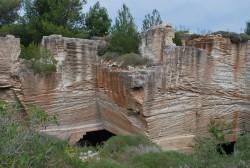
BY POPPE L. DE BOER
The concept of uniformitarianism dates back to the late 18th century. The idea is that physical and chemical laws have not changed, and that also in the distant geological past sedimentary processes have acted as they do today. However, various types of sedimentary processes and deposits, e.g. large-scale black-shale deposition during the middle Cretaceous, the absence of terrestrial vegetation in the pre-Ordovician, the deposition of up to 4 km thick evaporites in large basins, the rise and fall of dinosaurs during the Mesozoic, testify changes in the controls of sedimentary processes in the course of geological time.
The Black Sea is considered one of the end members of marine systems with black shale deposition, the other one being upwelling zones along continental margins. Why is the Black Sea the only example of the “black-sea model” today, and when and where did such situation occur in the past? Why is extensive anoxia, as in the North Atlantic and Tethys Oceans during the middle Cretaceous, not encountered in present-day oceans?
Orbital (Milankovitch) forcing, that is forcing of climate and oceanography by varying eccentricity, obliquity and precession, has been active throughout geological history. Orbital cyclicity in marine and terrestrial sediments is reported, however, much more frequently from certain stratigraphical periods (e.g. Cretaceous and Jurassic) than from others. Is this due to variations of the orbital parameters and their influence on climate and oceanography, or are other factors involved? The transfer of orbital signals is generally considered to be mediated by orbitally forced climate (change). In addition, variations in the distance between celestial bodies affect their mutual gravitational attraction which, in turn, should be of influence on the ocean tide. May we expect such tidal effects, in addition to orbital climate signals, to be recorded in sedimentary successions?
Saline Giants, accumulations of evaporitic salts of up to several kilometres thick, have been intermittently deposited in sedimentary basins during some few 100,000 years, on average about once every 5 million years. There are no recent examples of such large basins with evaporite salt accumulation. The Miocene Mediterranean example, formed during the Messinian Salinity Crisis, some 5.5 million years ago, is the most recent one. Is the absence of present-day saline giants accidental or are conditions different from the past? Can we expect other saline giants in the future, and where?
The present-day Earth’s surface with high mountains (Himalaya, Andes) is not representative for various other parts of the geological record. For example, after the break-up of Pangea major plate collisions were largely absent, with consequences for the continental relief and the character and extent of terrestrial and shallow marine environments. In addition to catastrophic events, the decline of dinosaurs may be related to the gradually changing face of the Earth during the Mesozoic.
